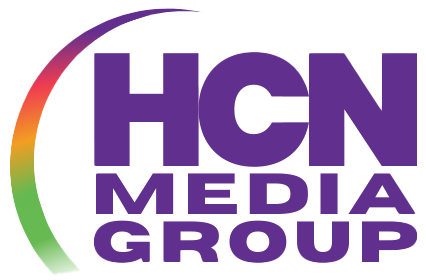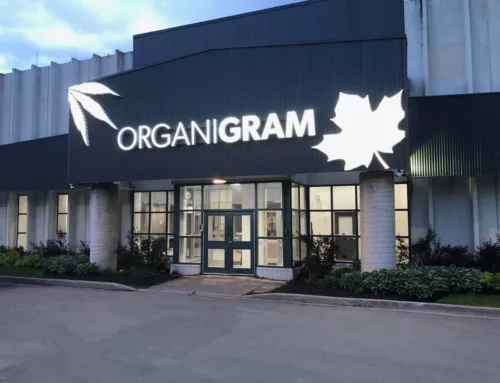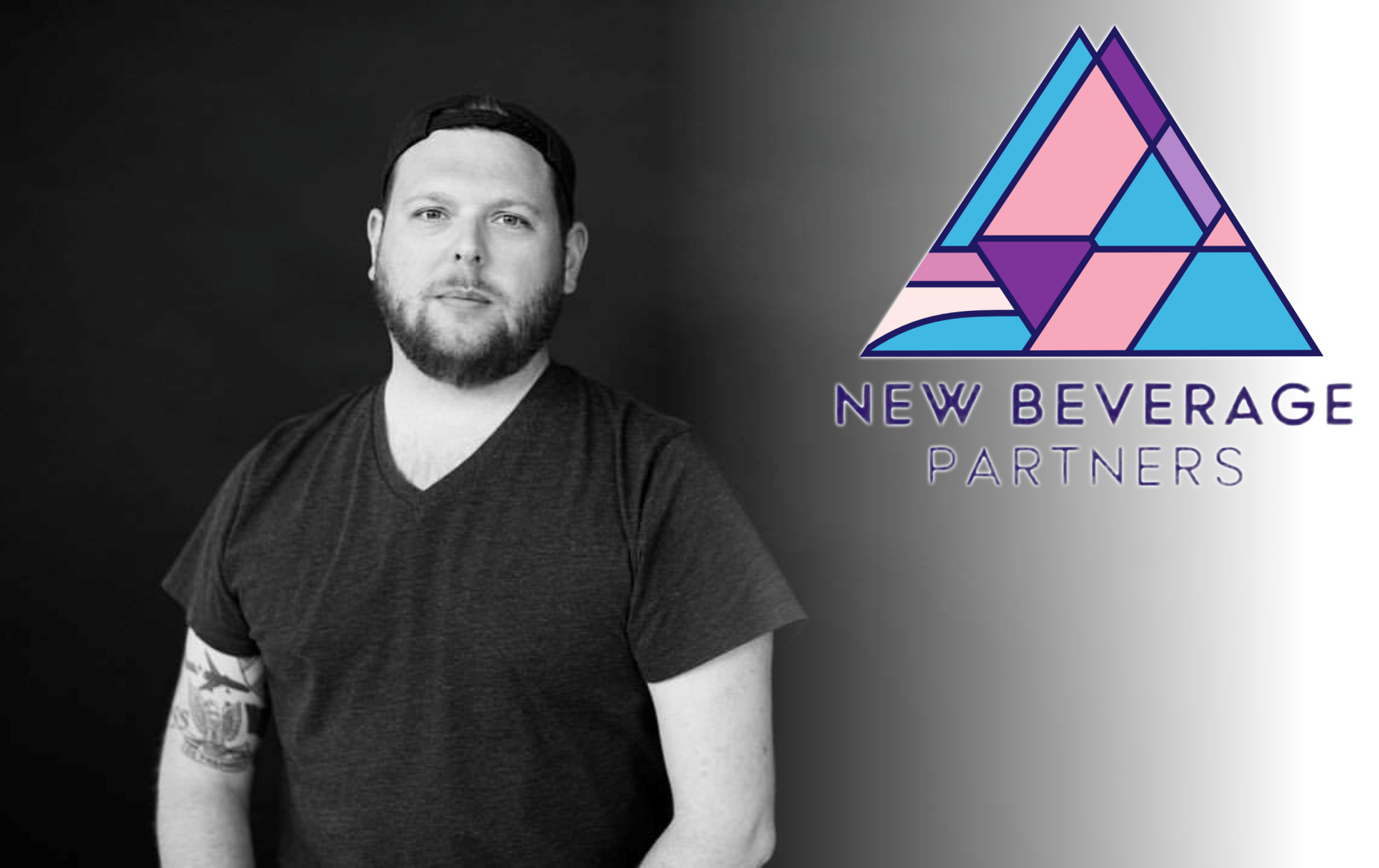HCN Investigates: Cannabis SPACs: What Are They? What Should You Know About Them?
LOS ANGELES– Cannabis companies have traditionally had trouble gaining funding via public offerings. With SPACs, entities in the cannabis and hemp sectors can be publicly traded in both American and Canadian markets.
What are cannabis SPACs, and which cannabis SPACs are currently active? Perhaps most importantly, are cannabis SPACs reliable investment vehicles?
What is a SPAC?
A special purpose acquisition company (SPAC) is a publicly traded entity that exists solely to merge with or acquire existing companies. SPACS do not have any commercial operations, and they are backed by underwriters.
During the formation of SPACs, the founders of these investment vehicles do not specify which entities they intend to acquire. This arrangement helps SPACs save time on what would otherwise be time-intensive disclosures.
For this reason, SPACs are sometimes referred to as “blank check companies.” While SPACs have been around for decades, they’ve only recently attained significant popularity.
How do SPACs raise capital?
SPACs raise capital via initial public offerings (IPOs). Investments are then combined into a blind pools, and they are usually placed in interest-bearing trusts.
Then, SPACs make acquisitions and investments in line with the strategies laid out by the company’s managers. As “blank check companies,” SPACs do not broadcast their intended acquisitions ahead of time, but shareholders are given a chance to vote on proposed deals.
SPACs usually have up to two years to make initial investments. At any time during this period, shareholders can back out by leveraging their redemption rights.
Why are SPACs important in the cannabis industry?
As of mid-2020, cannabis SPACs had already raised more than $2.5 billion. SPACs are widely viewed as the only game in town if cannabis companies want to go public.
Multi-state cannabis companies haven’t raised significant capital via IPOs or reverse takeovers in nearly two years. As venture capital and private equity investors continue to shy away from the complicated legal status of the American cannabis industry, SPACs are a welcome alternative.
Can cannabis SPACs be listed on US exchanges?
Companies that the United States federal government has deemed illegal cannot be listed on US stock exchanges. As a result, SPACs that purchase ancillary cannabis operators can be listed on the Nasdaq and NYSE, but SPACs involved with plant-touching companies cannot.
Which cannabis SPACs are currently active?
Due to the relatively short window SPACs are allotted to perform mergers or acquisitions, cannabis SPACs are constantly disappearing and reforming into new entities. These are the most notable cannabis SPACs currently in operation:
1. Clever Leaves Holdings
Under the ticker “CLVR,” Clever Leaves Holdings started trading on the Nasdaq on December 18th, 2020. This new SPAC is the result of a merger of Schultze Special Purpose Acquisition Company and Clever Leaves International.

This merger leaves CLVR with around $80 million in cash. Clever Leaves CEO Kyle Detwiler intends to use this cash sparingly to augment the growth of his SPAC, which is largely focused on cannabis flower production in Colombia.
How is Clever Leaves performing?
As of January 15th, 2021, Clever Leaves is trading 15.84% higher year-to-date. This cannabis SPAC has a SMA 50 of $10.18, and it is currently 23% lower than its all-time high.

2. Subversive Capital Acquisition Corp
The cannabis SPAC Subversive Capital (SBVCF) recently restructured into The Parent Company (TPCO Holding Corp.) via its acquisition of Caliva, ROC Nation, and Left Coast Ventures. Due to this SPAC acquisition, The Parent Company is now the largest vertically integrated cannabis operation in California. ROC Nation founder and acclaimed hip-hop artist Shawn “JAY-Z” Carter will serve as The Parent Company’s Chief Visionary Officer, placing a focus on social equity.
How is The Parent Company performing?
The formation of The Parent Company has not yet finalized, so this cannabis SPAC has not held an IPO. Upon finalization, all existing shares of SBVCF will be changed to GRAMF, TPCO’s new ticker symbol. The combination of shifting political leadership in the United States and JAY-Z’s focus on social equity will likely differentiate The Parent Company and deliver impressive performance.

3. Collective Growth Corporation
Founded in 2019, Collective Growth Corporation has historically enjoyed moderate performance. This cannabis-oriented SPAC recently announced its acquisition of Innoviz Technologies, a LiDAR sensor producer. This acquisition is now, however, under investigation due to suspicions that securities laws may have been violated.
How is Collective Growth Corporation performing?
Despite recent setbacks, Collective Growth Corporation (NASDAQ:CGRO) continues to perform moderately well. As of January 16th, 2021, CGRO was trading at $13.74, which is 29.18% lower than its 52-week high but 29.77% higher than its 52-week low.
4. Merida Merger Corp
Formed in November 2019, Merida Merger Corp has yet to announce any merger or acquisition plans. Merida’s IPO of $120 million consisted of 12 million $10 shares.
How is Merida Merger Corp performing?
As of January 19th, 2021, Merida Merger Corp (MCMJ) has gained 6.82% over the last year. Analysts suggest that MCMJ may face difficulty completing necessary mergers or acquisitions due to its focus on the hemp industry, which is generally home to smaller companies.
5. Greenrose Acquisition
Greenrose Acquisition held a $150 million IPO on February 11, 2020. This cannabis SPAC still has over a year to perform a merger or acquisition, and Greenrose has remained relatively quiet regarding its current operations and acquisition plans.
How is Greenrose Acquisition performing?
As of January 20th, 2021, Greenrose Acquisition (GNRS) has gained 293.91% over the last year, making it one of the best-performing cannabis SPACs. Market sentiment toward GNRS, however, remains lukewarm.

6. Ceres Acquisition Corp
Ceres Acquisition Corp held an IPO of $120 million in March of 2020. As a newly formed cannabis SPAC, not a lot is known about where Goldman Sachs alum Joe Crouthers intends to take Ceres. Crouthers appears keen, however, to facilitate the “consumerification” of cannabis by resolving supply-chain inefficiencies.
How is Ceres Acquisition Corp performing?
As a cannabis SPAC that intends to focus on plant-handling companies, Ceres trades on the Toronto-based NEO exchange under the ticker CERE. As of January 21st, 2021, CERE was trading at $9.90 USD, $0.10 less than its IPO price.
7. Silver Spike Acquisition Corp
A subsidiary of Silver Spike Capital, Silver Spike Acquisition Corp was launched in August 2019 with a $250 million IPO. As a result, Silver Spike is one of the best-funded cannabis SPACs.
In December of 2020, Silver Spike (SSPK) stock surged by 49% after the announcement of its merger with WM Holdings, the owner of the highly popular cannabis news and eCommerce platform Weedmaps. SSPK now has a market cap of over $700 million.
How is Silver Spike Acquisition Corp performing?
SSPK has gained 144.2% over the last year. Assuming this SPAC’s merger with Weedmaps goes through, it is likely that Silver Spike will experience even greater gains.
Are cannabis SPACs stable investment vehicles?
Cannabis companies purchased by SPACs face the risk of short-term investors immediately selling their shares. To succeed, cannabis companies involved with SPACs need significant amounts of initial cash paired with long-term investments.
In addition to at least two years of audit history and proper corporate governance, cannabis companies interested in partnering with SPACs must also conclude deals within three months. SPACs that partner with plant-touching companies are limited to Canadian exchanges, which may make conventional capital-raising vehicles more attractive.
Cannabis SPACs have displayed mixed market performance. In general, SPACs have traditionally yielded low returns. Within the unique setting of the cannabis industry, however, SPACs may offer surprisingly improved performance.
Investors should be cautiously optimistic when buying cannabis SPAC stocks. Choose SPACs based on past performance, merger history, and personnel.
Cannabis operators can avoid acquisition
You might not necessarily want to be acquired by a SPAC. With the right capital leverage in place, however, predatory SPACs may not give you much choice in the matter.
According to Mark Collins, President of Supercritical Brands (and CSO for Highly Capitalized), there are ways out of SPAC acquisitions for undervalued cannabis operators.
“I think that SPACs are necessary for emerging markets to consolidate and clean up weaker brands. Not everyone wants to be acquired, though, and by increasing your valuation with strategic new initiatives, you can make SPAC acquisitions financially prohibitive.”
Collins says there are a few different strategies brands can use to become too expensive for SPACs such as launching a range of products that gain a company more market share and therefore a bigger slice of cannabis revenues. Ultimately, Collins says, SPACs are here to stay.
How Do SPACs Serve a Capital-starved Industry?
The flurry of capital markets activity in the industry, buoyed by a billion-dollar bonanza on the Canadian capital markets in 2018, came with a high cost. Suddenly, publicly-listed cannabis entities—many of whom still had limited operations in only a few jurisdictions—faced investor pressure to find accretive targets quickly. A rush to find assets, mixed with both supply shortages on the sale-side and the relative lack of sophistication and operational history on the side of available targets, quickly led to overpriced deals burdened with regulatory scrutiny and little actual upside in operational expansion. Within a year, many of the successful IPO/RTO entrants had become cash-strapped.
This downward trajectory affected share prices, which affected value, and made institutional investors already wary of investing in this risky space more cautious about pursuing investments lacking “hard” metrics like EBITDA and the possession of valuable licensed assets. Investors and lenders then shifted their focus to smaller, cash-positive operations (to the extent such enterprises survived the RTO-acquisition boom).
With wary investors and a minimal number of FDIC-insured bank lenders in the space, cannabis entrepreneurs are running out of options to raise capital. SPACs create a unique opportunity to fill the current vacuum of capital in the cannabis industry—an industry with an upside that may be yet to come.
Investors may be starting to feel a turning of the tide. On the heels of Democratic control of the Senate, prominent cannabis companies have taken advantage of investor demand, with $1.6 billion of financing deals announced or closed in January.
How Does a SPAC Structure Benefit a Cannabis Entrepreneur?
The two-year lifecycle of a pre-acquisition SPAC may allow for accretive optimization in an industry where financial opportunities, regulatory hurdles, and business metrics are in a constant change of flux. Now, let’s look more closely at how the SPAC timeline typically plays out.
IPO Phase
In a process that can take approximately 3-6 months, a SPAC sponsor can work with an underwriter bank to file a registration statement, “test the waters” using a roadshow presentation, and list on a U.S. exchange.
The IPO process includes approval by the exchange to list the blank check shares and a review of the registration statement by the SEC. A key part of this phase—both legally and from a marketing directive—is finding and putting in place the right management team to identify the eventual target and run the post-acquisition business.
Operational Phase / Looking for Business Combination
During this phase, which begins immediately following the initial offering, SPAC management conducts target due diligence and engages in metrics analysis and benchmarking to identify a target roughly the size of the public capital raised during the IPO. Nasdaq rules require that the acquisition occurs with one or more target businesses that together have an aggregate fair market value of at least 80% of the assets held in trust, comprised of the IPO-raised and sponsor capital.
It is important to note that SPAC management may not legally identify any targets before the IPO. Following the IPO, besides targeting and locating the target, the SPAC must also maintain SEC compliance with regularly filed annual, quarterly, and periodic public filings.
Business Combination Transaction
Once one or more targets are identified and an LOI is executed, the parties work through several complicated steps of effecting the transaction. Like any M&A transaction, there is extensive diligence on the target and a negotiation of the key merger economics and mechanics. Additional SPAC requirements include obtaining requisite shareholder approval of the transaction, and the shareholders’ ability to redeem units purchased in the IPO either via a tender offer or in a shareholder’s meeting called specifically for consideration of the transaction.
SPACs typically also have a mechanism, discussed in their registration documents, allowing for an extension of the timeline to complete the business combination upon shareholder approval (though this period does not typically exceed 24 months).
Business Integration
Once the merger is completed, the private target is typically merged with and into an entity designated by the SPAC and becomes a publicly-traded company with full SEC filing obligations. Of note, the applicable exchange will, once again, have the opportunity to review and approve the entity’s shares listing at the time of the business combination to ensure the target business continues to meet all of the exchange’s listing rules, including federal compliance.
Cannabis SPAC Advantages
SPAC structure and timeline may be advantageous to a cannabis entrepreneur willing to think outside the box for traditional capital financing. Because the SPAC doesn’t need to detail the acquisition target industry at the IPO stage, and because it is prohibited to identify a target business at this stage, issuers have the luxury of time to find a target.
Given the changing landscape of cannabis legalization, this creates the possibility that a plant-touching business may be compliant with federal law by the time of a business combination. Absent this, the issuers can still focus on federally and state-compliant ancillary businesses, hemp operations, or international plant-touching companies when acquiring a target.
This timeline also allows cannabis industry insiders the opportunity to pursue high upside opportunities that are still in the early stages of operation, or even in the licensing and application stages. The prospect of securing licenses within the SPAC lifetime can result in exponential valuation, resulting in potential alignment with the available acquisition resources for the SPAC. Most importantly, following a business combination, a cannabis enterprise would have immediate access to capital, including on more robust U.S. markets. Such a timely capital infusion could benefit early-to-market listed entities immensely.
What are the Unique Challenges of Cannabis SPACs?
Exchange Approval
Of course, several obstacles stand in the way of a cannabis SPAC listing—including, primarily, approval of the applicable exchanges involved in the transaction. As stated above, U.S. exchanges, at the time of publication, have not been willing to list companies holding cannabis licenses in the U.S. But exchanges are becoming more and more comfortable with certain ancillary companies. The comfort level of an exchange concerning a specific deal may depend on the details of the target company’s operations.
Cannabis M&A Generally
All the typical challenges of cannabis M&A also apply to SPAC transactions. We don’t need to rehash all of these concerns in this article. For reference, some common issues in cannabis deals are discussed in these articles about Cannabis REITs and Due Diligence in Cannabis Transactions, and in this Cannabis M&A presentation.
It is worthwhile to emphasize one of the most significant issues: the need, depending on the state and localities of licensure, to obtain regulatory approval before closing the deal and to subject the SPAC to a background check. But future cannabis SPAC transactions may be subject to regulatory approval at the state and local levels.
In summary…whatever your experience or opinion is of SPACs, they are simply another tool for companies to raise capital in a cash-starved industry. Ultimately, they will be around for the foreseeable future as they are helping to solve the investment problem in the booming cannabis industry.
The Players in the World of Cannabis SPACs
| SPAC | Exchange(s) and Ticker | Size (USD) | Status |
| Tuatara Capital Acquisition | Nasdaq (TCACU) | $175 million | IPO phase.
Preliminary prospectus filed on January 27, 2021. |
| BGP Acquisition Corp. | NEO (BGP) | $115 million | Target search
November 4, 2022 deadline. |
| Silver Spike Acquisition Corp II | Nasdaq (SPKBU) | $250 million | Target search
March 11, 2023 deadline. |
| Choice Consolidation SPAC | NEO (CDXX) | $100 million | Target search
February 19, 2023 deadline. |
| Ackrell SPAC Partners I Co. | Nasdaq (ACKIU) | $138 million | Target search
June 21, 2022 deadline. |
| Greenrose Acquisition | Nasdaq (GNRS) | $150 million | Target search
Aug. 13, 2021 deadline. |
| Merida Merger I | Nasdaq (MCMJ) & NEO (MMK.UN) | $130 million | Target Search
Nov. 7, 2021 deadline. |
| Bespoke Capital Acquisition Corp. | Toronto Stock Exchange (BC.U) | $350 million | Target Search
Announced on December 28, 2020 it is expanding its search beyond the cannabis industry. |
| Tuscan Holdings Corp. II | Nasdaq (THCA) | $173 million | Target Search
Rumors of non-cannabis deal being pursued. January 16, 2021 deadline. |
| Ceres Acquisition Corp. | NEO (CERE.UN) | $120 million | Announced business combination with Parallel. |
| Canaccord Genuity Growth II Corp. | NEO (CGGZ) | $100 million | Announced confidential non-binding LOI with prospective target in December 2020.
April 5, 2021 deadline. |
| Collective Growth Corp. | Nasdaq (CGRO) | $150 million | Announced business combination.
Announced a non-cannabis deal. |
| Silver Spike Acquisition Corp. | Nasdaq (SSPK) | $250 million | Announced business combination.
Announced plans on December 10, 2020 to merge with Weedmaps and list on Nasdaq. |
| Tuscan Holdings Corp. | Nasdaq (THCB) | $240 million | Announced business combination.
Announced plans to merger with a non-cannabis company called Microvast that makes batteries for electronic vehicles. |
| The Parent Company (formerly Subversive Capital Acquisition Corp.) | NEO (GRAM.U) | $575 million | Closed business combination.
Closed a transaction with several companies (Caliva, Left Coast Ventures, JAY-Z’s Monogram) to create The Parent Company. |
| Ayr Strategies (formerly Cannabis Acquisition Strategies Corp.) | CSE (AYR) | $125 million | Closed business combination. |
| Akerna Corp (formerly MTech Acquisition Corp) | Nasdaq (KERN) | $50 million | Closed business combination.
Closed merger with MJ Freeway on June 17, 2019 and now listed on Nasdaq as Akerna Corp. |
| Columbia Care Inc. (formerly Canaccord Genuity Growth Corp.) | CSE (CCHW) & NEO | $46 million | Closed business combination.
Closed merger on April 26, 2019. |



































